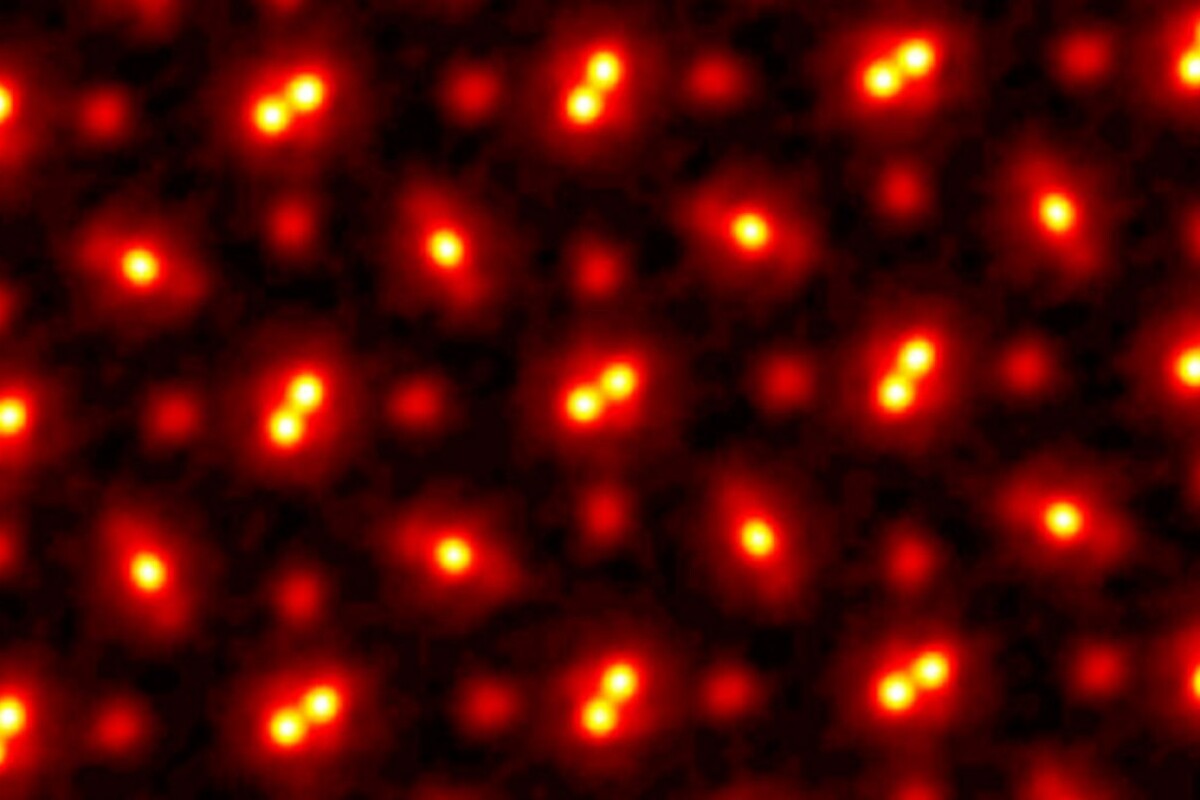Researchers at Cornell University have snapped the clearest images of atoms ever taken. Aided by new noise-reducing algorithms, the images are of such high resolution that, the team says, they almost reach the ultimate limit possible.
The images were taken of atoms in a praseodymium orthoscandate (PrScO3) crystal, zoomed in 100 million times. The atoms can be clearly seen as bright dots, surrounded by red “clouds”, which, according to the researchers, are blurring created by the jiggling of the atoms themselves.
The unprecedented clarity comes from a combination of things. First is the general technique, known as electron ptychography, which works by scanning the patterns of how electrons scatter off the target material. Several different scans are done, with areas that overlap between each scan, and the instrument focuses on what changes there are in those overlapping areas between scans. That allows them to better determine the shape of the object that created the pattern.
The detector itself – known as an electron microscope pixel array detector (EMPAD) – uses a blurred beam to first capture a wider range of data. Then, that blurring is corrected through a series of algorithms that reconstruct the data, ultimately creating an image with a resolution on the scale of picometers, or one-thousandth of a nanometer.
“With these new algorithms, we’re now able to correct for all the blurring of our microscope to the point that the largest blurring factor we have left is the fact that the atoms themselves are wobbling, because that’s what happens to atoms at finite temperature,” says David Muller, lead author of the study. “When we talk about temperature, what we’re actually measuring is the average speed of how much the atoms are jiggling.”
In fact, the team says that the images are approaching the physical limits for highest resolutions possible at this scale. That said, there are a few things that could be done to reduce the jiggle blur – use heavier atoms that jiggle less, or cool the samples down towards absolute zero, where that movement stops. But even then, quantum fluctuations would still produce some blur.
The researchers say that the breakthrough could be used for peering closer at quantum computer components, or bioimaging.
The study was published in the journal Science.
Source: Cornell University




